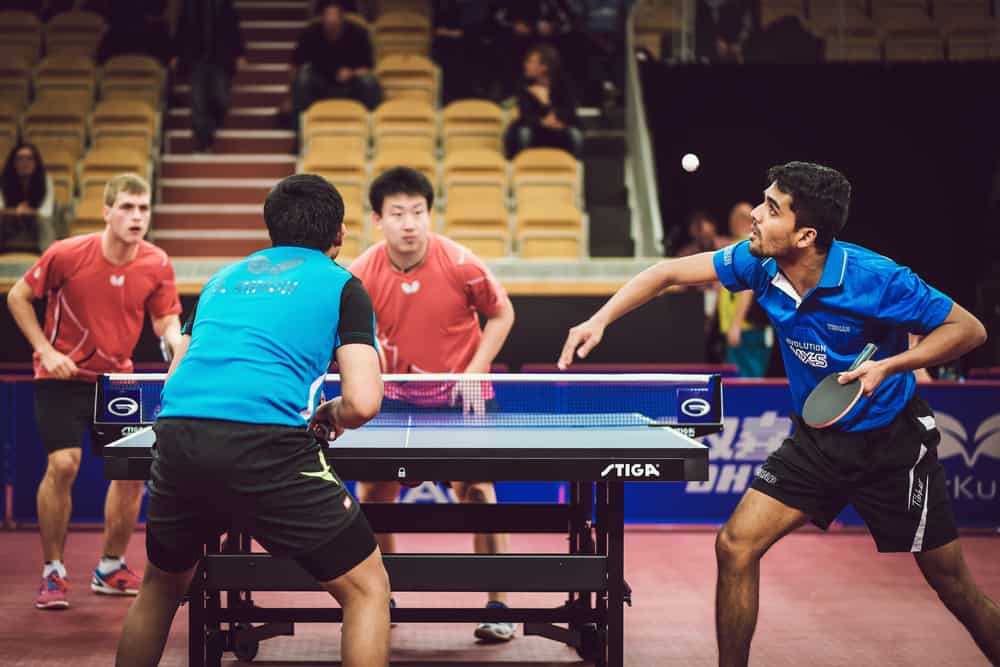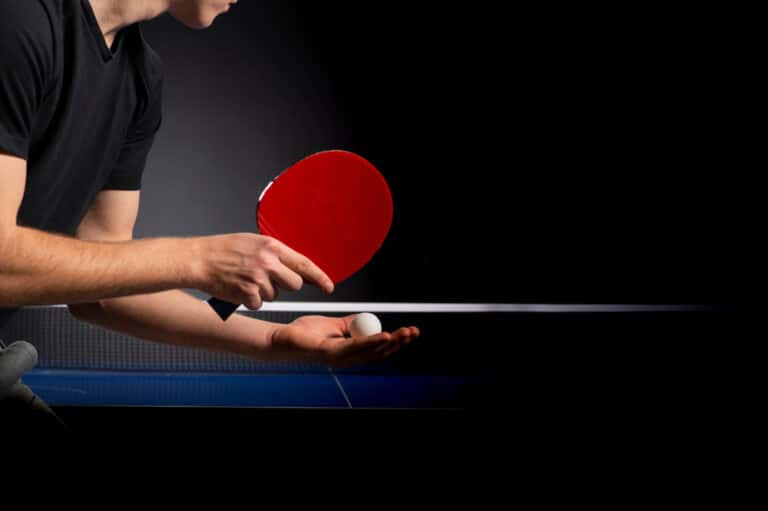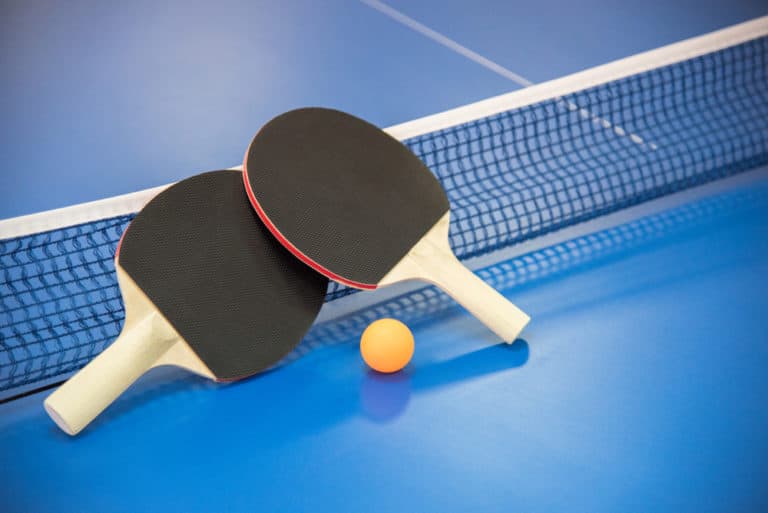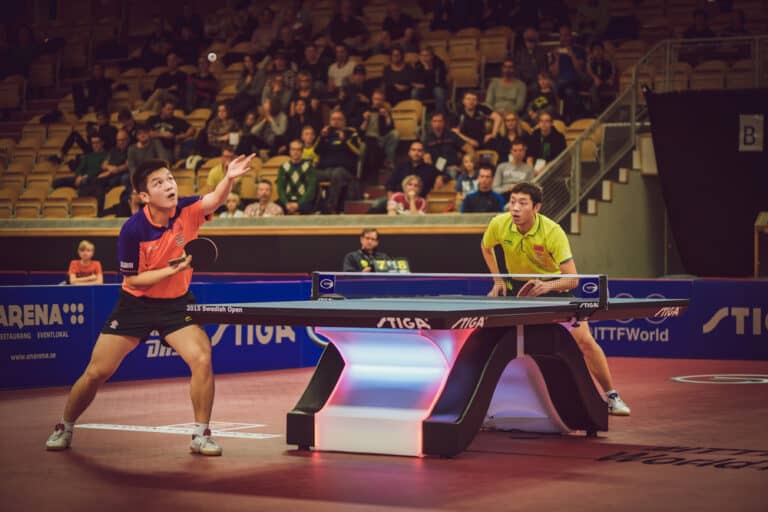Do You Have To Serve Diagonally In Table Tennis Doubles?
Due to the table’s compact size, the power of the serve is controlled by forcing the server to first let the ball bounce on their side before it bounces on the opponent’s side, but they are free to serve the ball anywhere on the table. However, this rule was altered in a doubles game to create a fair playing field for the receivers as the extra player reduces the playable space.
According to the ITTF, International Table Tennis Federation, the service rule 2.6.3 states that, in a doubles match, the ball should start in the half court of the server and bounce in the right half of the receiver meaning the serve should be diagonal.
It’s vital to note that the diagonal serve rule applies explicitly to the doubles match. Single-match players can still play anywhere on the table to gain a competitive advantage. So, when are servers obligated to serve diagonally, and why, and if players are forced to serve diagonally, should the opponents also receive diagonally? Let’s look at the diagonal rule and when it applies.
When Should You Serve Diagonally?
The only obligation to serve diagonally is during a doubles game. Although players in a single match can choose to serve diagonally, they are free to serve anywhere on the table as long as it makes contact.
During a doubles match, the ball has to bounce once on the right side of the server and once on the right side of the receiver. There is never an alteration to the process, from the server’s right side to the receiver’s right side, for both teams, even when they switch the servers and the receivers.
Therefore, servers should serve in the correct half of the court; otherwise, a point will be awarded to the opponents. The white line separating the court is considered part of the half-court in which the server should place the ball; therefore, playing on the line is still a legal serve.
Why Should The Serve Be Diagonal In Doubles?
Table tennis, like many technical sports, requires the players to outplay not only their opponents but also out-smart them. Even in single matches, players will deliberately look for weak spots in the opponent or deceive them into assuming certain positions, making them lose points.
The diagonal serving rule in doubles aims to minimize the server’s deception and avoid putting the receivers bundled up in the center of the court, as this will consistently provide the server with the upper hand when playing the third shot.
The receivers can return the serve in their half-court, with either their back or forehand creating a level playing field as the server cannot play a strategical serve.
For example, playing at the elbows on the other side of the court will result in a point as the opponent will not have space to return it due to the extra player.
Usually, shorter diagonal serves are more effective as it prevents the receivers from attacking and gaining an offensive position. In addition, a single player is also allocated to receive the ball on the diagonal side to avoid confusion between the receivers.
Shorter serves land just past the net close to the center of the table, making it difficult to judge which player is in a better position to return it, therefore, a specific player is allocated to serve in the correct court, and a receiver is allocated to return.
In short, more players near the table reduces the space players can move to play certain shots. To avoid strategical serves that exploit the issue of space, the diagonal rule was created to create a fair game that is more entertaining for the spectators as it makes the rallies more enticing and challenging.
Do All Players Receive The Ball If It Is Served Diagonally?
Due to the diagonal serve rule in a doubles game, there is a specific structure all players follow to create equal opportunities for the players in both teams to return and serve.
In the ITTF Handbook, rule 2.08.02 states that after the first player served and the opposing player returned, their partners should then play the consecutive shots, and then all players will continue the same sequence.
To provide more clarity, here is an example to elaborate:
If team one consists of players “A” and “B” and team two consists of “C” and “D,” player “A” must serve to player “C,” player “B” will then play to player “D”; the sequence will then start again until one player was able to win a point.
It is vital to note that although the players have to alternate their returns, they do not have to play in certain directions or places on the table. Any player can play the ball anywhere, as long as a singular player does not play two consecutive shots.
In addition to the order of play, there is also a specific order and sequence of serve:
Rule 2.13.04 states that the player who chose to serve first will be paired with the player who chose to receive first. Therefore, if the previous receiver chooses to serve in the next round, the previous server will have to receive.
For example:
If player “A” from team one plays against player “D” from team two, they will always be paired together in the first game. In the next game, if player “D” decides to serve, then player “A” must be the receiver for that game.
Therefore, in the consecutive matches, each team member will decide which one of them will serve, and the receiver will be decided by reversing the previous sequence.
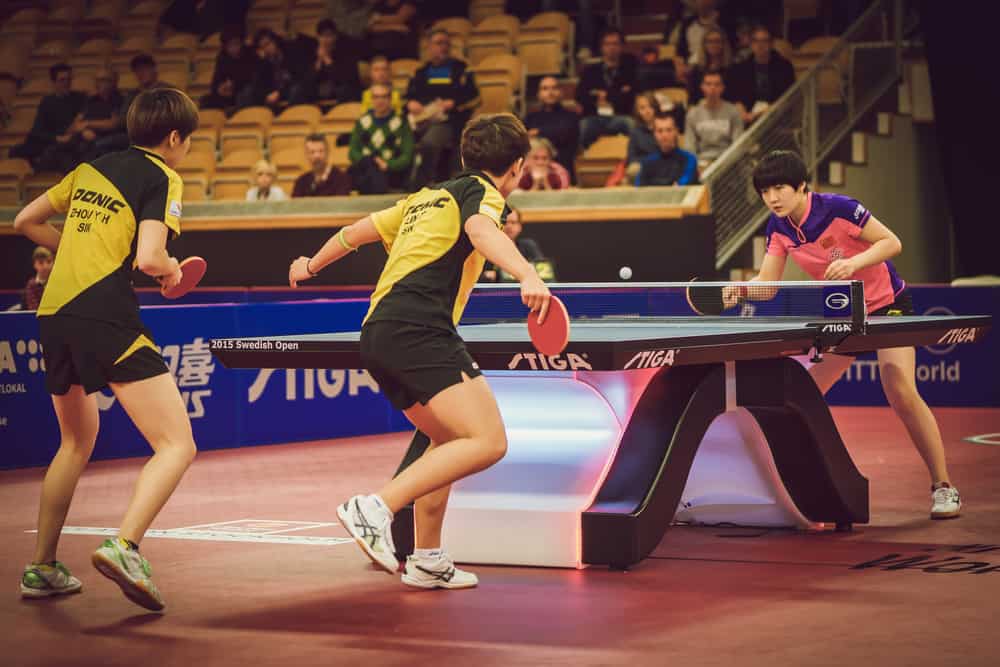
What Happens If You Don’t Serve Diagonally In A Doubles Game?
Similar to a singles match, any foul will result in points lost. The only legal serve in doubles is when all the standard rules of serving are followed, and the ball lands on the right court. If the serve hits the net but lands in the right court, the point will be replayed until it’s either legal or foul.
The left side of the court is considered out of play in a doubles game; therefore, if the ball lands on the left side after it touched the net or went clean over, it is considered a foul, and the point will be given to the opponents.
Conclusion
In a single match, players can choose the serve diagonally as they are allowed to play anywhere on the table to gain an advantage. However, in a doubles game, players must serve diagonally to keep the game fair and consistent.
References
- https://documents.ittf.sport/sites/default/files/public/2022-02/ITTF_HB_2022_clean_v1_0.pdf
- https://www.rookieroad.com/table-tennis/do-you-have-to-serve-diagonally-in-table-tennis/
- https://www.liveabout.com/doubles-tips-for-table-tennis-3173962
- https://racketinsight.com/table-tennis/doubles-rules-player-guide/

